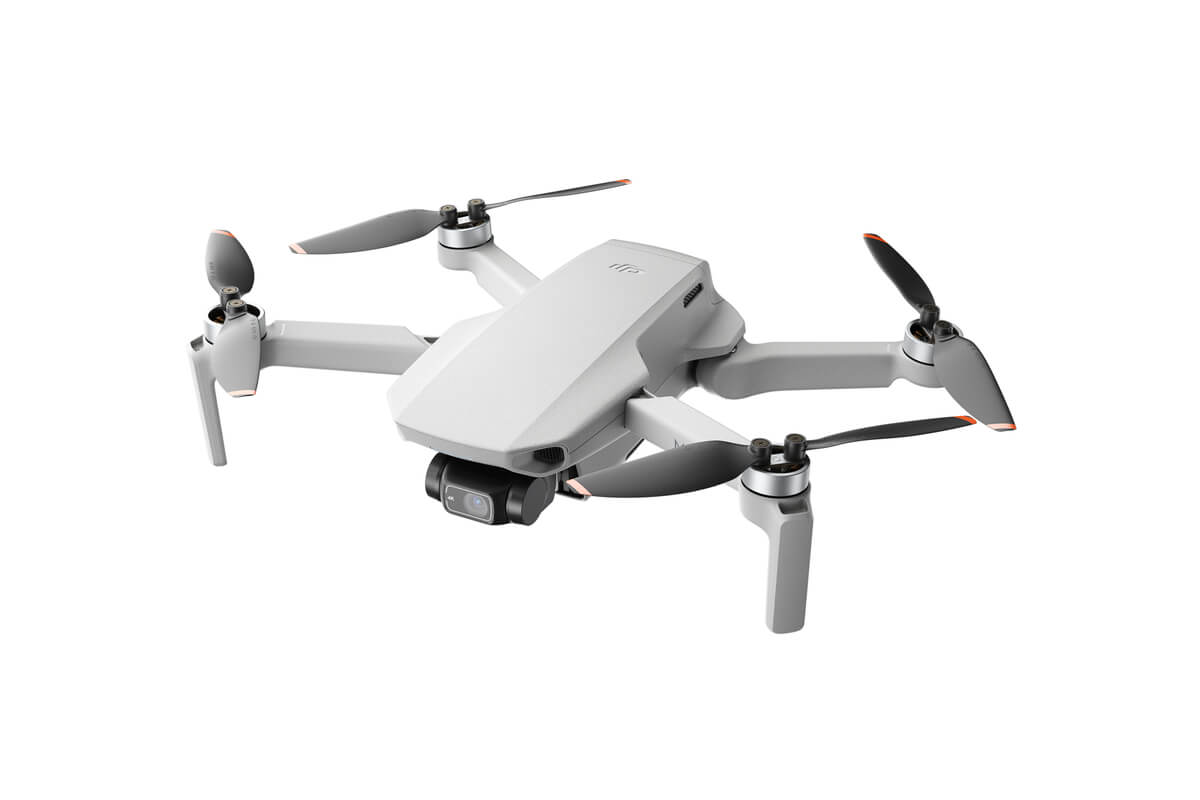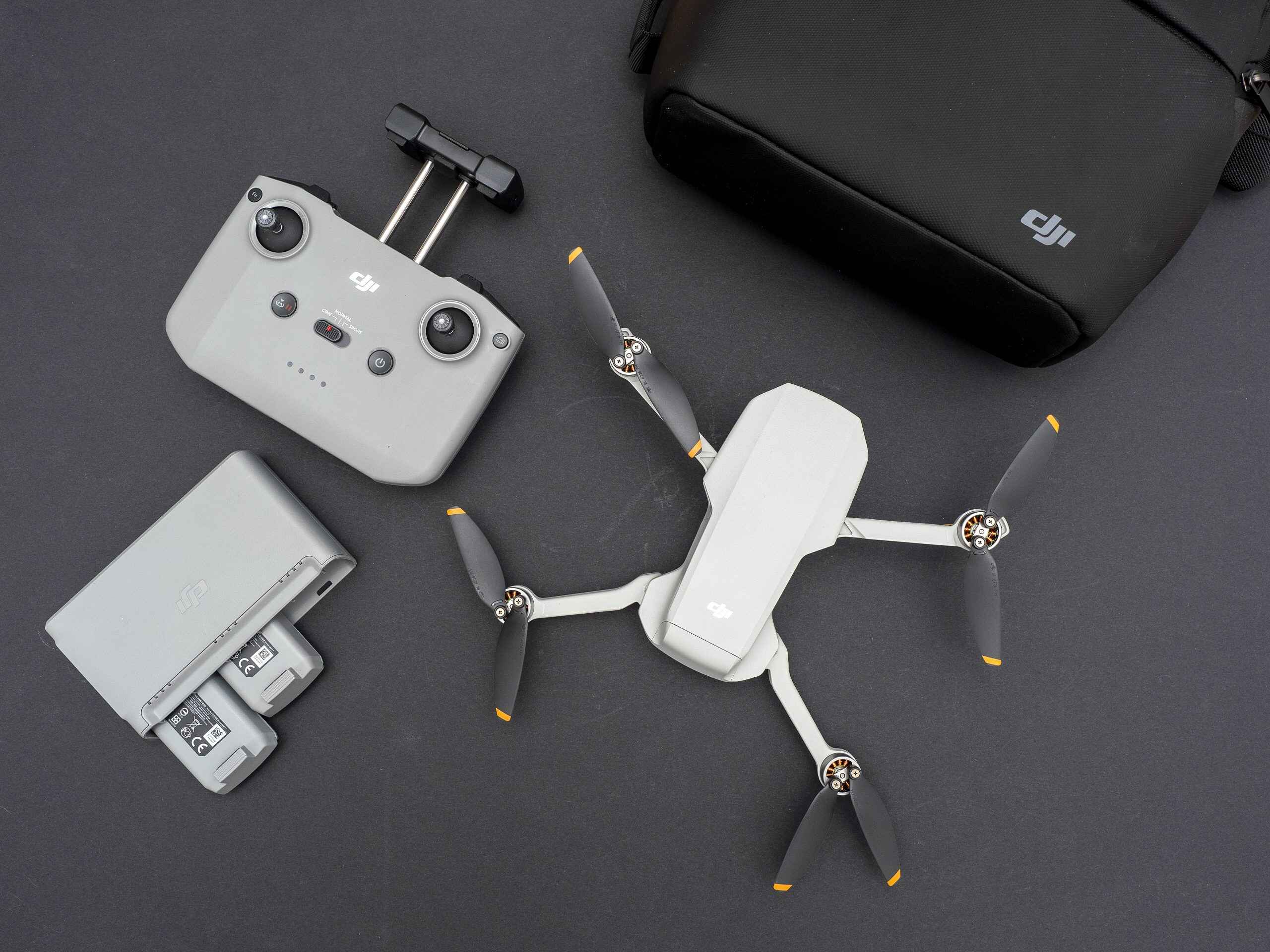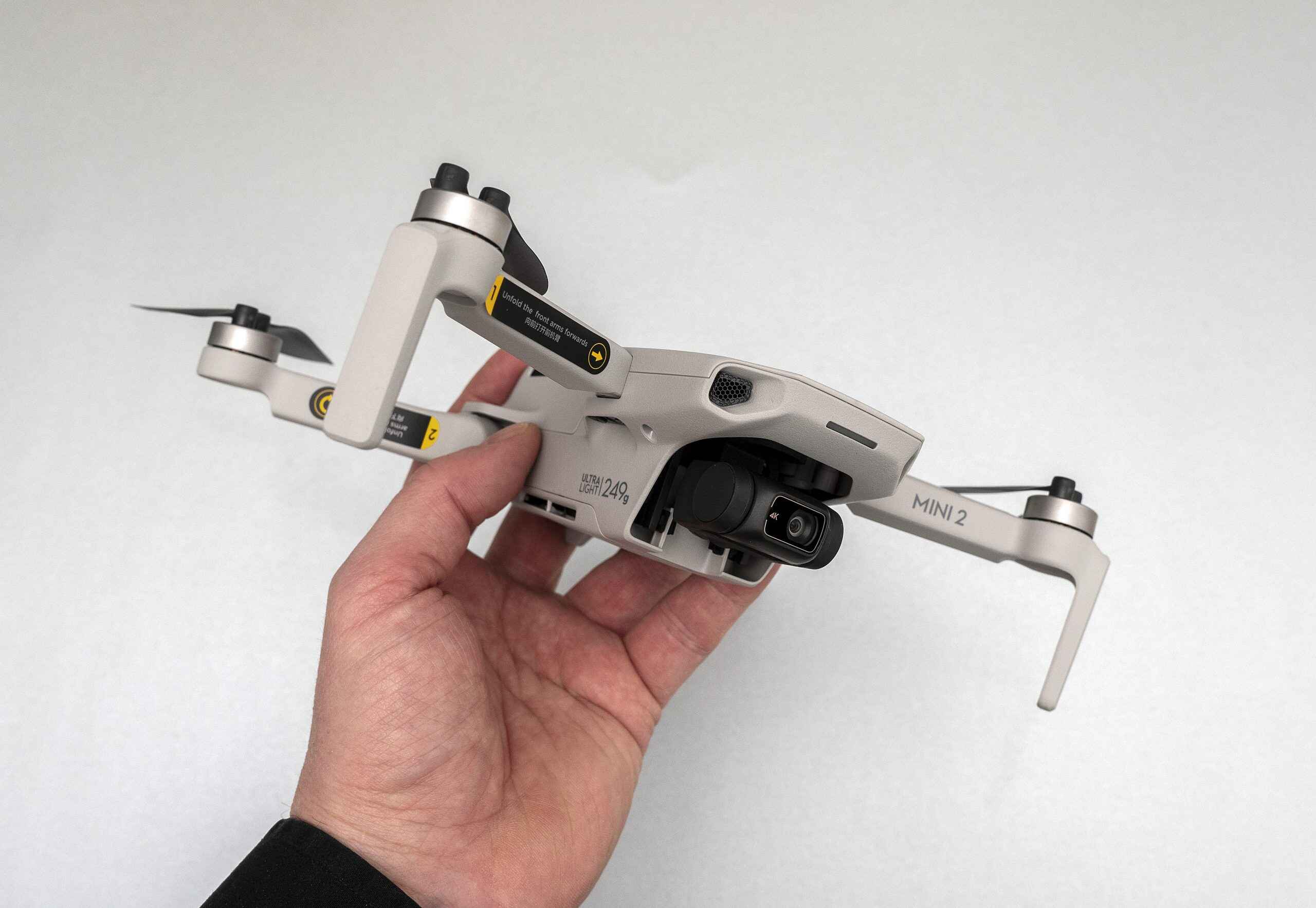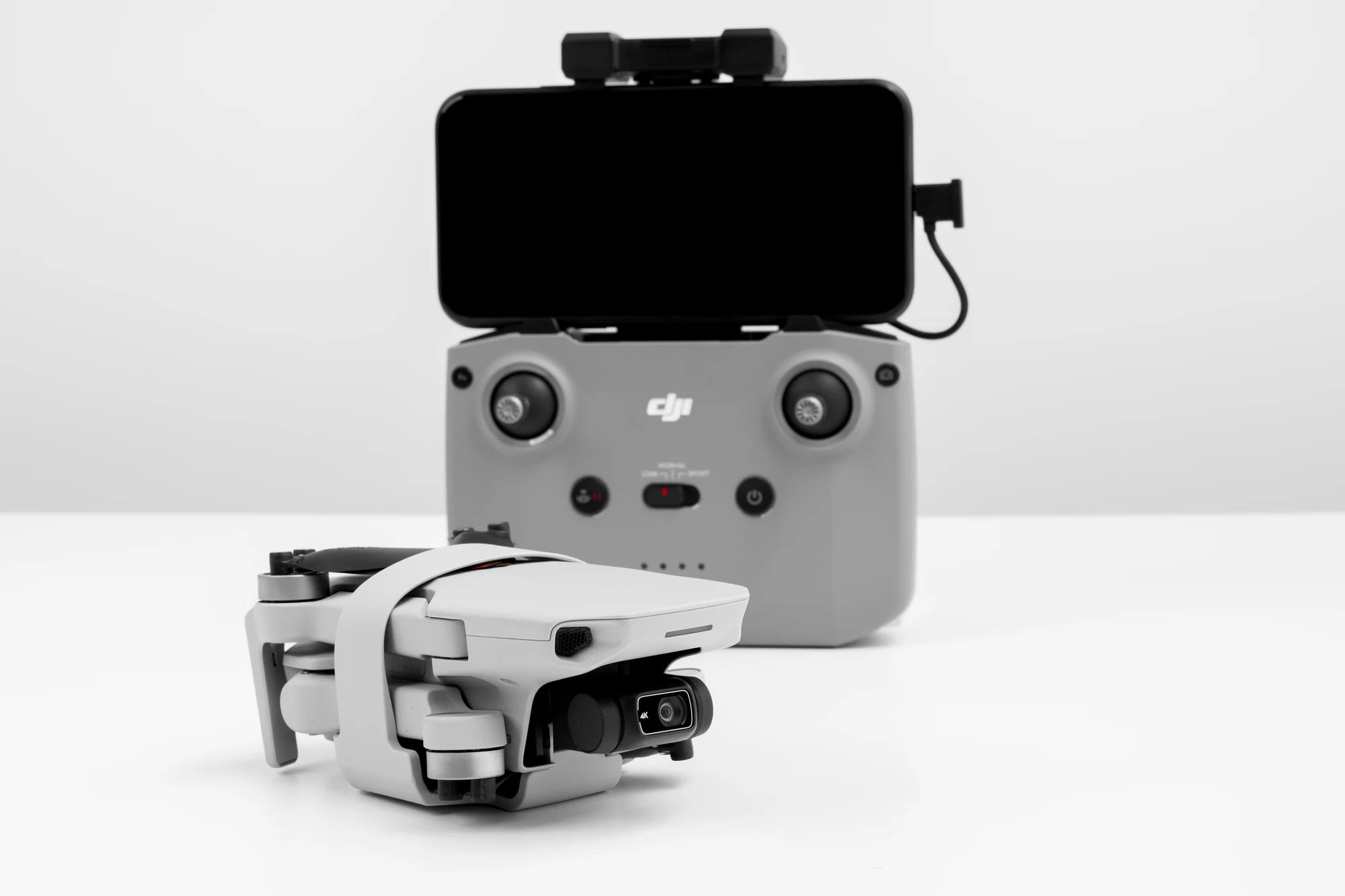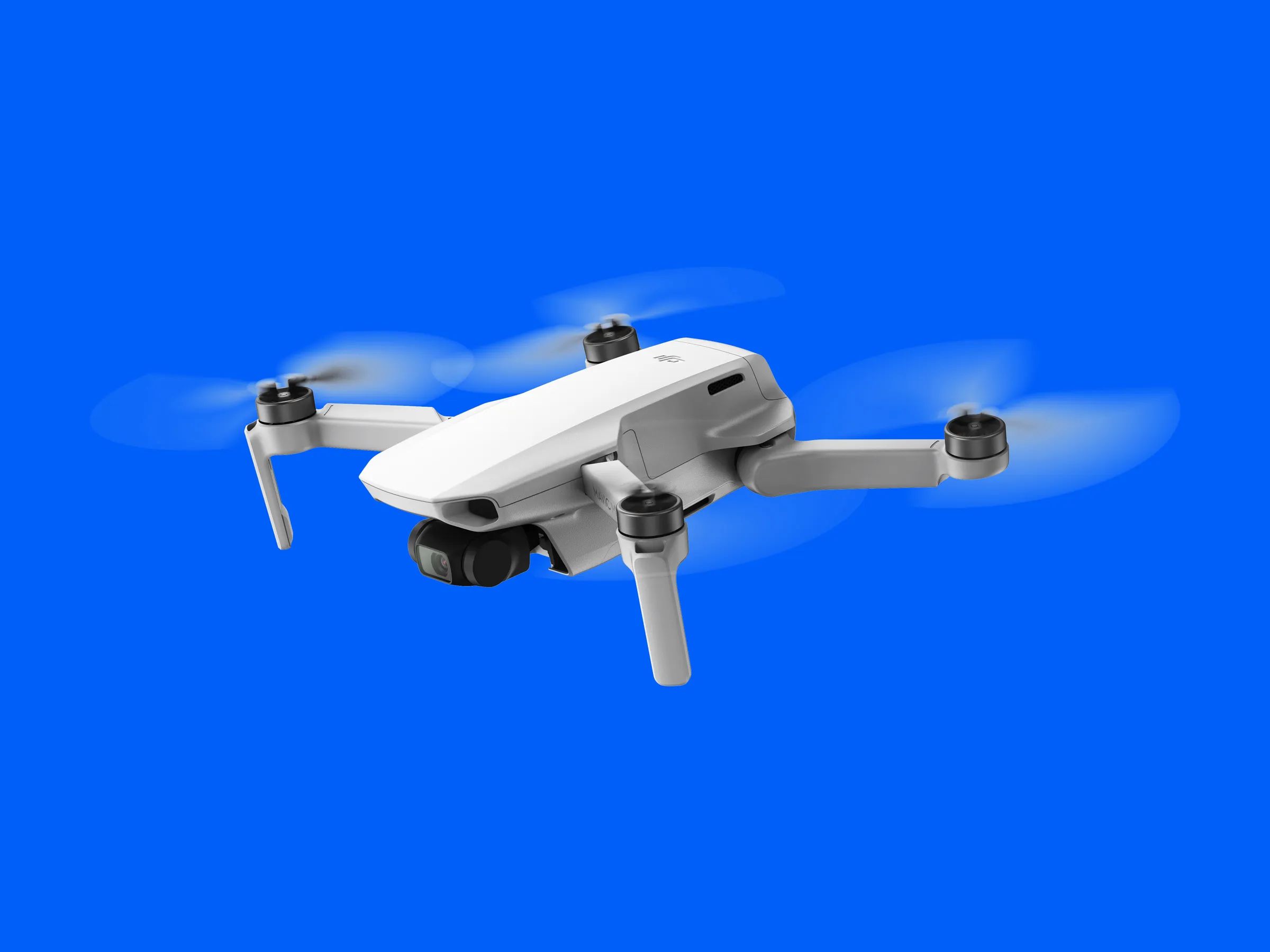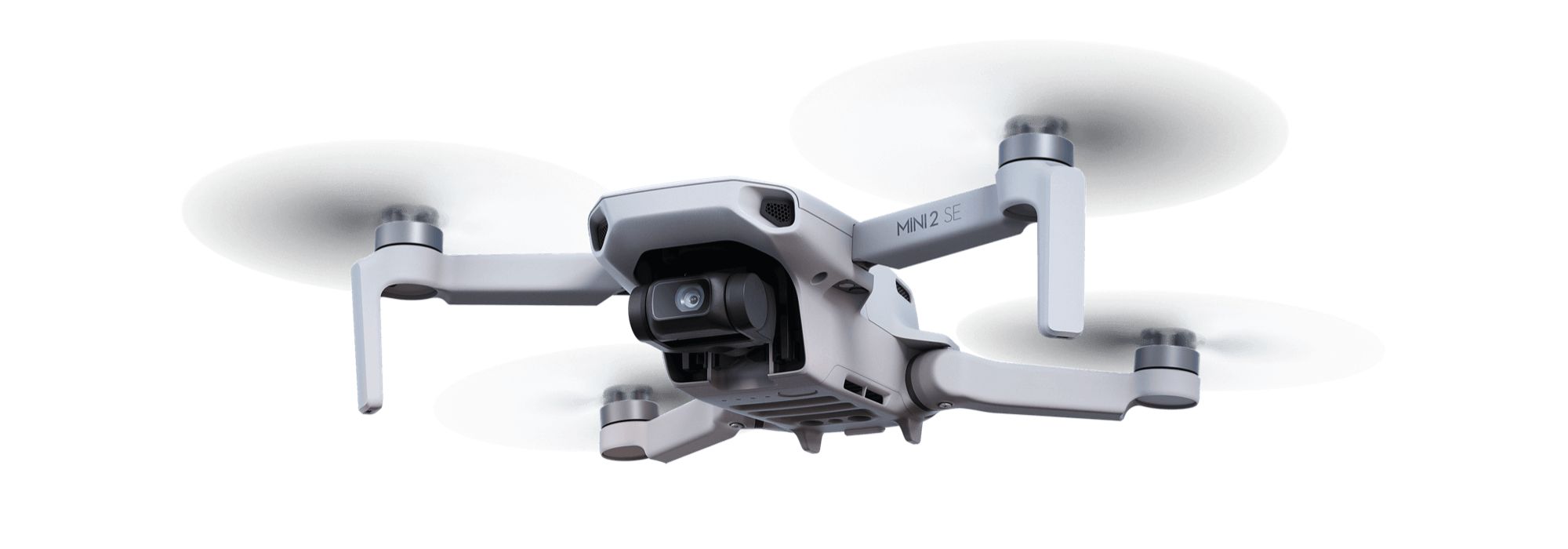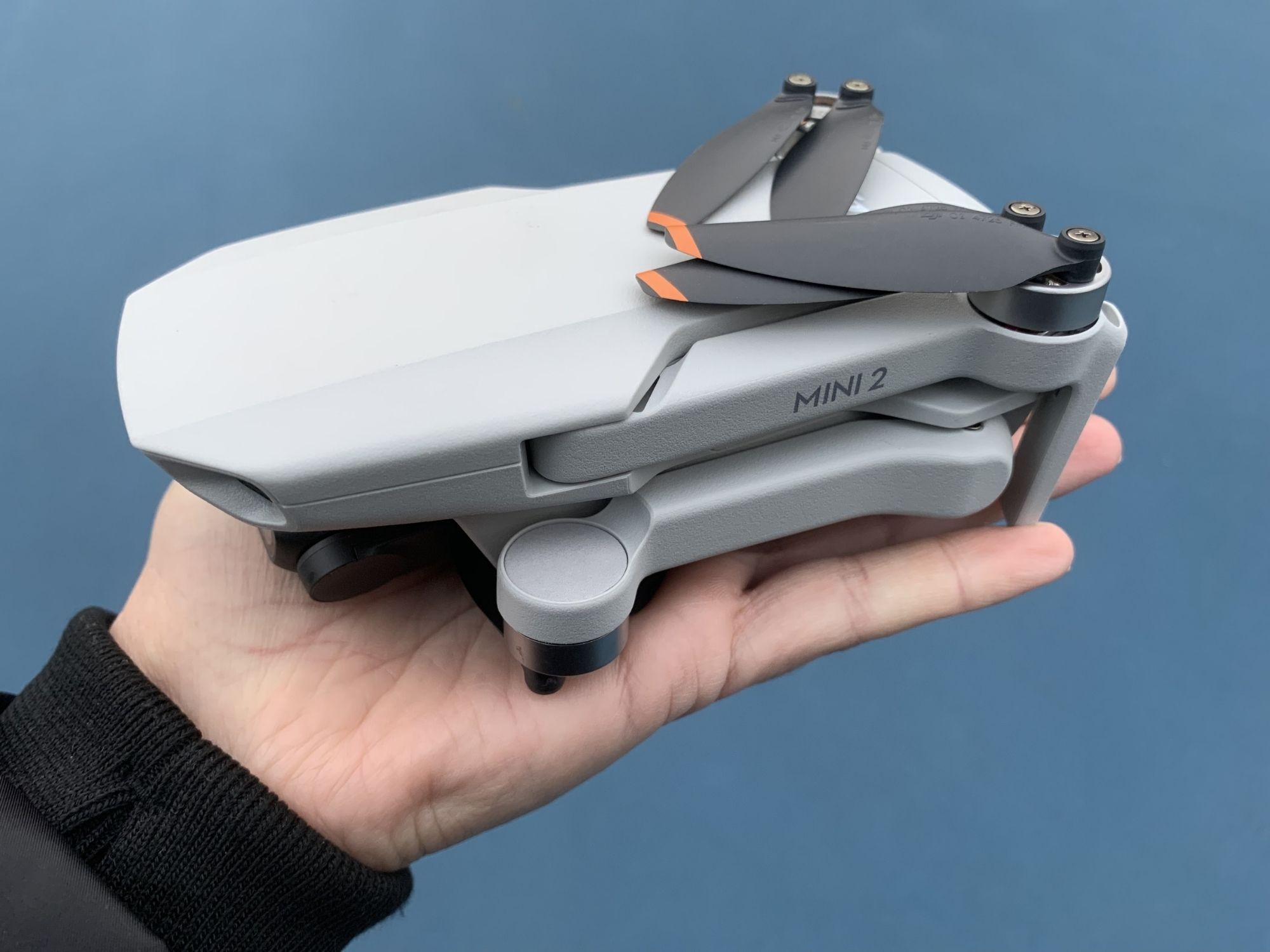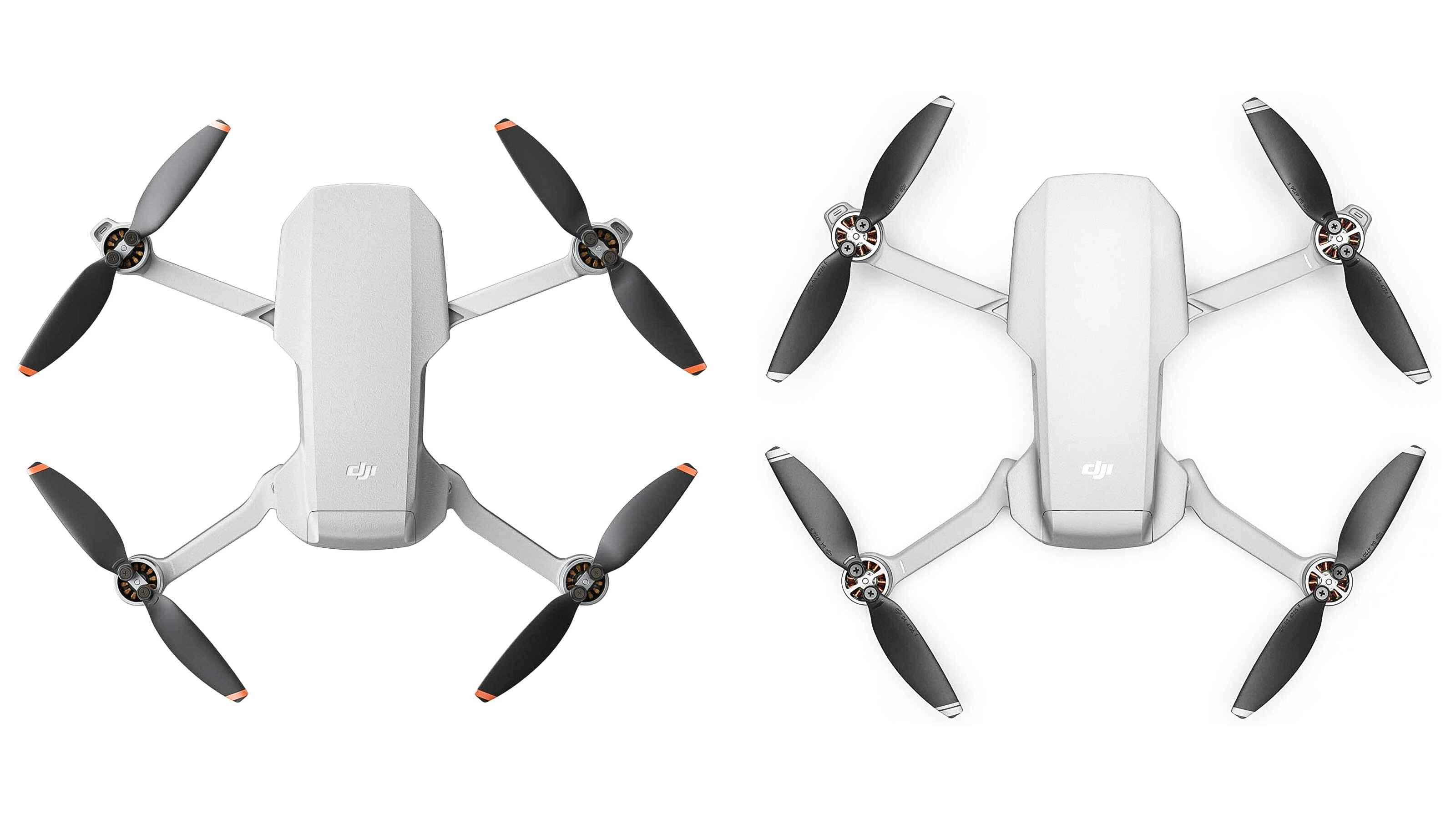Introduction
The DJI Mini 2 is a lightweight and compact drone that offers impressive flight capabilities. As a drone enthusiast, one of the key features you may be interested in is the maximum flight altitude of the DJI Mini 2. Understanding the maximum flight altitude is essential for planning drone flights and ensuring compliance with regulations.
The maximum flight altitude refers to the highest height the drone can reach in the sky. It determines how high you can fly your DJI Mini 2 and capture stunning aerial footage from above. However, it’s important to note that the maximum flight altitude of the DJI Mini 2 may be subject to various factors and regulations.
In this article, we will delve into the details of the DJI Mini 2’s maximum flight altitude, the factors that can affect it, and the regulations you need to adhere to. We will also provide some useful tips for flying the DJI Mini 2 at high altitudes and showcase real-life examples of its performance in different scenarios.
Whether you’re a professional photographer, an adventurous vlogger, or simply a drone enthusiast seeking new horizons, understanding the limitations and possibilities of the DJI Mini 2’s maximum flight altitude will help you make the most out of your aerial adventures.
Understanding the Maximum Flight Altitude
The maximum flight altitude of the DJI Mini 2 plays a crucial role in determining how high and far you can explore the skies. It refers to the maximum height that the drone can reach above ground level during its flight. Understanding the factors that influence this limit is essential for safe and enjoyable drone flying.
The DJI Mini 2 is designed to reach impressive altitudes, allowing you to capture breathtaking aerial views. The drone has a maximum flight altitude of 4,000 meters above sea level. This corresponds to approximately 13,123 feet, providing ample opportunities for stunning aerial photography and videography.
However, it’s important to note that the maximum flight altitude may vary based on different factors. One of the primary factors influencing the DJI Mini 2’s maximum flight altitude is the regulations set by aviation authorities. These regulations are in place to ensure the safety of airspace and prevent collisions with other aircraft.
In addition to regulatory limitations, environmental conditions can also impact the maximum flight altitude. High winds, low temperatures, and atmospheric pressure changes can affect the drone’s performance and limit its ability to reach higher altitudes. It’s crucial to consider weather conditions before attempting to fly the DJI Mini 2 at maximum altitudes.
Furthermore, the battery life of the drone can also influence the maximum flight altitude. The DJI Mini 2 uses a lithium-polymer battery, which has a certain capacity and flight time. As the drone gains altitude, it consumes more power to maintain stability and flight control. Therefore, it’s important to ensure that you have sufficient battery life remaining to safely bring the drone back to the ground before it runs out of power.
Understanding the maximum flight altitude of the DJI Mini 2 is not only about reaching new heights but also about being responsible and adhering to regulations and safety guidelines. By considering these factors, you can make informed decisions about how high you can fly your DJI Mini 2 and capture stunning aerial footage while keeping yourself and others safe.
Factors Affecting Maximum Flight Altitude
Several factors can impact the maximum flight altitude of the DJI Mini 2. Understanding these factors will help you make informed decisions about where and how high you can fly your drone. Let’s explore the key factors that influence the drone’s maximum flight altitude:
1. Regulatory Limitations: Aviation authorities establish regulations to ensure the safe and responsible use of drones. These regulations typically include restrictions on maximum flight altitudes to prevent interference with manned aircraft. It’s essential to familiarize yourself with the specific regulations in your jurisdiction and abide by the set limits to avoid any legal issues or jeopardizing the safety of others.
2. Air Density: Air density decreases as altitude increases. The decrease in air density affects the aerodynamics of the drone and its ability to maintain stable flight. The DJI Mini 2 relies on air pressure sensors to adjust its flight controls and stabilize its position. As the air density decreases at higher altitudes, the drone’s performance may be affected, leading to a reduced maximum flight altitude.
3. Battery Life: The battery life of the DJI Mini 2 directly impacts its maximum flight altitude. As the drone gains altitude, it consumes more power to maintain stability and flight control. Therefore, having sufficient battery life is crucial to ensure a safe return to the ground. It’s important to monitor the battery level and plan your flight duration accordingly to avoid the risk of the drone running out of power mid-flight.
4. Weather Conditions: Weather conditions such as high winds, extreme temperatures, and atmospheric pressure changes can impact the drone’s performance and maximum flight altitude. Strong winds can push the drone off course or make it difficult to control at higher altitudes. Extreme temperatures can affect battery performance and reduce flight time. It’s crucial to check weather conditions and avoid flying in unfavorable conditions that may compromise the safety of the drone and your ability to control it effectively.
5. Payload Weight: The weight of any additional equipment or payload attached to the DJI Mini 2 can also affect its maximum flight altitude. Carrying a heavier payload puts more strain on the drone’s motors and battery, potentially limiting its ability to reach higher altitudes. It’s important to consider the weight of your equipment and assess its impact on the drone’s performance and flight capabilities.
By considering these factors and understanding their influence on the maximum flight altitude of the DJI Mini 2, you can ensure safe and responsible drone flying while maximizing the capabilities of your drone to capture stunning aerial footage.
FAA Regulations and Maximum Flight Altitude
When it comes to flying drones, it’s crucial to adhere to the regulations set by the Federal Aviation Administration (FAA) in the United States. The FAA has specific rules in place to ensure the safety of airspace and prevent collisions with manned aircraft. These regulations include limitations on maximum flight altitudes for drones like the DJI Mini 2.
The FAA categorizes drones into different classes based on their weight and purpose of use. For recreational drone flying, which applies to most DJI Mini 2 users, there are certain guidelines to follow:
1. Maximum Altitude Limit: According to the FAA, recreational drone pilots should not fly their drones above 400 feet above ground level. This is to ensure that drones do not interfere with manned aircraft that typically operate at higher altitudes. Exceeding this altitude limit can lead to legal consequences and jeopardize the safety of other airspace users.
2. Authorization for Higher Altitudes: If you have a specific need to fly your DJI Mini 2 above the maximum altitude limit, you can apply for authorization from the FAA. This typically applies to commercial drone operations or specific circumstances where higher altitudes are required. Obtaining proper authorization is essential to ensure compliance with FAA regulations.
3. Other Restricted Airspaces: The FAA designates certain areas as restricted airspace, which may include airports, military bases, and national parks. It’s critical to be aware of these restricted areas and avoid flying your drone in these locations. Trespassing restricted airspace can pose a serious threat to aviation and national security.
4. Additional Local Regulations: In addition to FAA regulations, it’s important to check for any local or state-specific drone regulations in your area. Some cities or municipalities may have additional restrictions or permit requirements for drone flights. It’s your responsibility as a drone pilot to familiarize yourself with these regulations and comply with them.
By understanding and complying with FAA regulations, you can ensure safe and responsible drone flying. Remember that these regulations are in place to protect the airspace and the safety of all users. Always maintain a responsible and ethical approach when operating your DJI Mini 2 to enjoy the incredible possibilities of aerial photography and videography.
Tips for Flying DJI Mini 2 at High Altitudes
Flying the DJI Mini 2 at high altitudes can provide breathtaking aerial views and unique perspectives. However, it’s important to take certain precautions and follow these tips to ensure a safe and successful flight experience:
1. Check Local Regulations: Familiarize yourself with the local regulations and restrictions regarding maximum flight altitudes. Ensure that you are complying with these regulations and obtaining any necessary permits or authorizations before flying at high altitudes.
2. Be Mindful of Battery Life: The DJI Mini 2’s battery life will decrease faster when flying at higher altitudes. Before taking off, make sure your battery is fully charged and monitor its level throughout the flight. Plan your flight duration accordingly and allow for a safe return with sufficient battery capacity.
3. Monitor Weather Conditions: Pay attention to weather conditions before flying at high altitudes. Strong winds and extreme temperatures can impact the drone’s stability and overall performance. Avoid flying in unfavorable weather conditions that may compromise your ability to control the drone safely.
4. Maintain Line of Sight: When flying your DJI Mini 2 at high altitudes, it’s important to maintain a clear line of sight. Higher altitudes can make it more challenging to visually track your drone. Use the drone’s camera feed and monitor to ensure you have a clear view and maintain control of the drone at all times.
5. Fly in Open Spaces: Choose open areas with minimal obstructions, such as tall buildings or trees, when flying at high altitudes. This will minimize the risks of collision and enhance the safety of your flight. Be mindful of other airspace users and avoid flying near airports or restricted areas.
6. Increase Communication Range: The DJI Mini 2 utilizes a remote controller for communication. To ensure a strong and stable connection at high altitudes, make sure you are within the recommended communication range specified by DJI. This will help maintain control and avoid any potential signal loss.
7. Plan Your Flight Path: Before taking off, plan your flight path and identify any potential obstacles or hazards. Consider the wind direction and incorporate it into your flight plan to optimize stability and control. Be prepared to adjust your flight path if needed to avoid any unforeseen dangers.
By following these tips, you can maximize the enjoyment and safety of flying your DJI Mini 2 at high altitudes. Always prioritize safety, adhere to regulations, and continuously monitor the drone’s performance to ensure a successful and memorable flight experience.
Real-life Examples of DJI Mini 2’s High Altitude Performance
The DJI Mini 2 is known for its impressive performance, even at high altitudes. Let’s explore some real-life examples that demonstrate the capabilities of the drone at elevated heights:
1. Aerial Photography and Videography: The DJI Mini 2 excels in capturing stunning aerial footage at high altitudes. With its 4K camera and three-axis gimbal stabilization, it can produce professional-quality photos and videos even when flying at heights of several hundred feet. The drone’s ability to maintain stability and capture smooth footage allows for breathtaking aerial cinematography and photography.
2. Landscape Exploration: With the DJI Mini 2, you can explore the beauty of landscapes from a whole new perspective. Flying at high altitudes allows you to capture expansive views, showcasing vast mountains, scenic coastlines, or sprawling cityscapes. The drone’s compact size and lightweight design make it agile and maneuverable, enabling you to navigate through tight spaces while capturing awe-inspiring aerial shots.
3. Adventure Sports Documentation: The DJI Mini 2 provides a fantastic tool for documenting adventure sports at high altitudes. Whether you’re capturing breathtaking shots of a climber scaling a mountain or a paraglider soaring through the sky, the drone’s high altitude capabilities ensure you can get up close and personal with the action. The ability to capture dynamic footage from above adds a unique perspective to any adventure sports video or photography project.
4. Wildlife Tracking: The DJI Mini 2’s high altitude performance can also be utilized in wildlife tracking and conservation efforts. When flying at higher altitudes, you can observe animal behavior and capture footage without disturbing their natural habitat. This allows for non-intrusive wildlife monitoring and can contribute to scientific research and environmental conservation initiatives.
5. Real Estate and Property Inspection: In the realm of real estate and property inspection, the DJI Mini 2’s high altitude capabilities are highly beneficial. It enables you to capture comprehensive aerial views of properties, showcasing their entire layout and surrounding areas. This makes it easier to assess properties from a marketing or inspection perspective and provide clients with a detailed visual overview.
These real-life examples demonstrate how the DJI Mini 2’s high altitude performance opens up a world of creative possibilities. Whether you’re a professional photographer, an outdoor enthusiast, or someone looking to explore new perspectives, the drone’s ability to fly at high altitudes expands your creative horizons and allows you to capture breathtaking moments from above.
Conclusion
The DJI Mini 2’s maximum flight altitude provides drone enthusiasts with the opportunity to explore the skies and capture stunning aerial footage. Understanding the factors that influence the maximum flight altitude is crucial for safe and responsible drone flying. Regulatory limitations, air density, battery life, weather conditions, and payload weight are all essential considerations when operating the DJI Mini 2 at higher altitudes.
Complying with FAA regulations is paramount to ensure the safety of airspace and avoid legal consequences. Familiarize yourself with the maximum altitude limits and obtain any necessary authorizations for flying at higher altitudes. Additionally, monitoring and managing battery life, being mindful of weather conditions, and maintaining line of sight are all important tips to consider when operating the DJI Mini 2 at high altitudes.
Real-life examples showcase the DJI Mini 2’s impressive performance at higher altitudes, ranging from stunning aerial photography and videography to landscape exploration, adventure sports documentation, wildlife tracking, and property inspection. The drone’s capabilities enable users to capture breathtaking moments and unique perspectives from above, providing endless creative possibilities.
As you embark on your drone flying journey with the DJI Mini 2, remember to prioritize safety, adhere to regulations, and continuously monitor the drone’s performance. By doing so, you can enjoy soaring to new heights and capturing captivating aerial footage while enjoying a safe and responsible flight experience.







